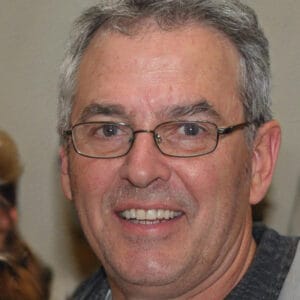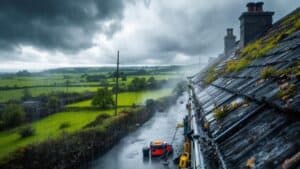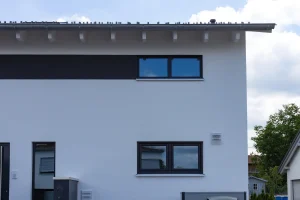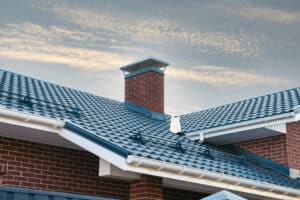When it comes to maintaining a functional gutter system, the interaction between roof design and gutters is vital to consider. The slope, shape, materials, and even the positioning of your roof can significantly impact the strain on your gutters and the frequency of repairs needed. Understanding these interactions allows homeowners to make informed decisions about gutter maintenance and ensure the longevity and effectiveness of their guttering system.
In this article, we will explore the various ways in which roof design can interact with gutter repair. By gaining a deeper understanding of the intricate relationship between roof design and gutter repair, homeowners can take proactive measures to maintain a well-functioning gutter system and safeguard their homes from potential water damage.
Key Takeaways
- Steep roofs increase the strain on gutters, leading to more frequent repairs.
- Complex roof shapes can distribute water unevenly, putting stress on gutters.
- Gutters should align with the roof’s slope for swift water direction towards downspouts.
- Roofing material choice affects the longevity and repair frequency of gutters.
How Does Roof Slope Affect Gutter Stress?
The steepness of your roof can significantly affect the strain on your gutters, leading to a greater need for repair. A steep roof quickly sheds water and debris, which can cause a deluge that overwhelms your gutters. You’ve got to ensure they’re sturdy enough to handle the rush, or you’ll be dealing with frequent overflows and potential damage.
If your roof’s pitch is more gentle, water and debris tend to linger a bit longer. It means your gutters don’t face the same onslaught as with steeper roofs, but don’t be fooled, you’re not out of the woods. Standing debris can clog your gutters, and stagnant water may lead to rust or rot, necessitating repair or replacement.
To keep your gutters in tip-top shape, you’ll need to adjust maintenance based on your roof’s slope. Steep roofs might need stronger, more securely fastened gutters, while lower-pitched roofs may require more frequent cleaning to prevent blockages.
How Do Different Roof Shapes Influence Water Flow?
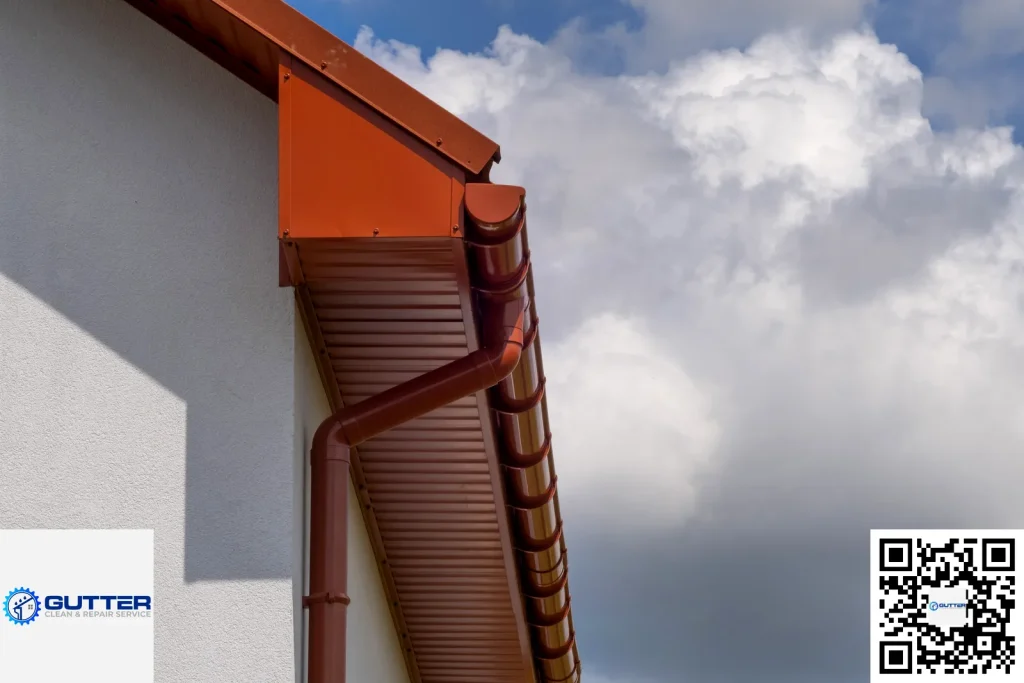
While you’re considering the pitch of your roof, it’s also crucial to understand how different roof shapes can influence water flow and, subsequently, the stress on your gutters.
A simple gable roof, with its two sloping sides, allows water to flow down easily, channelling it directly into your gutters.
In contrast, a more complex roof shape, like a hipped roof with multiple slopes, can distribute water in various directions, causing your gutters to work overtime in certain areas.
Roof designs with valleys—where two roof planes intersect—create areas where water can accumulate and speed up, potentially overwhelming your gutter system. You’ll want to ensure that these areas have adequate gutter support to handle the increased flow.
Conversely, a flat roof, while not entirely flat, has a slight slope and can pool water if not properly designed, putting pressure on the gutter seams and joints.
What Is the Impact of Gutter Positioning on Efficiency?
Your roof’s design not only affects water flow but also dictates the optimal positioning of gutters to maximize efficiency and minimize the need for frequent repairs. It’s crucial to understand how gutter placement can influence their effectiveness.
Here’s what you need to consider:
- Slope Alignment: Gutters should align with the roof’s slope to ensure water is directed swiftly and smoothly toward the downspouts.
- Overhang Length: Extensive overhangs may require gutters to be placed further from the fascia to catch the water effectively.
- Downspout Distribution: Position downspouts at the lowest points of the roofline to aid in quick water evacuation, reducing the chance of overflow and potential damage.
- Gutter Angles: Gutters should be installed with a slight angle towards downspouts to prevent standing water that can lead to corrosion and leaks.
By strategically positioning gutters in relation to these elements, you’ll ensure that your gutter system works at peak performance. Properly placed gutters reduce debris accumulation, water damage, and the frequency of maintenance needs.
Don’t overlook the importance of positioning; it’s a key component in extending the life and functionality of your gutters.
How Do Roof Materials Affect Gutter Durability?
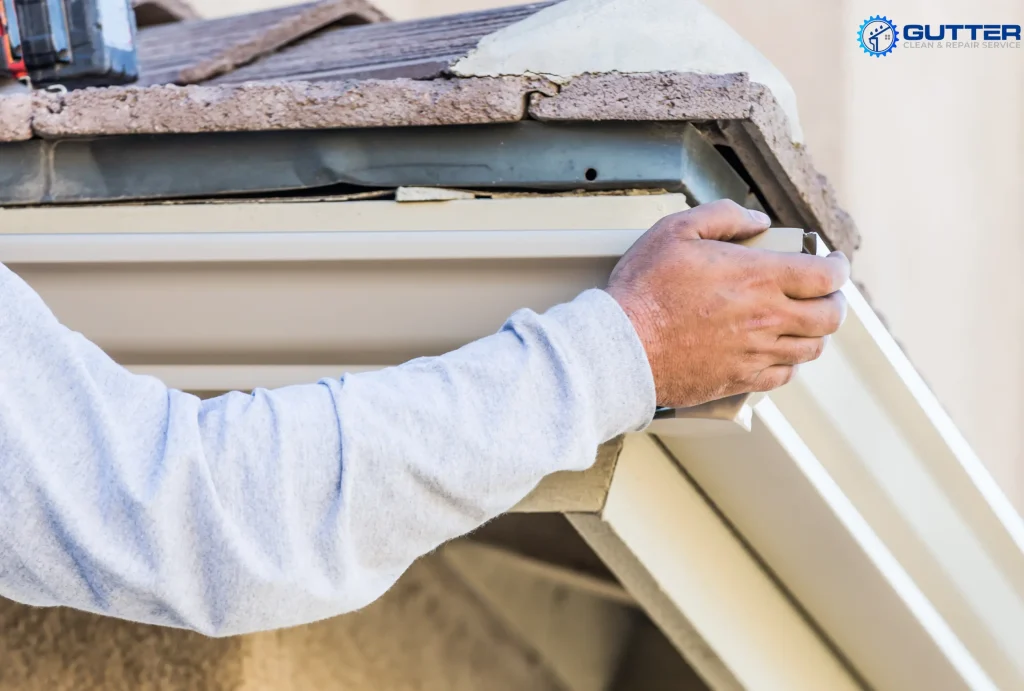
Considering the durability of different roofing materials is essential, as they can significantly impact the longevity and repair frequency of your gutters. When you choose materials like slate or metal for your roof, you’re opting for longevity. These materials can last for decades with minimal maintenance, which means your gutters aren’t subjected to frequent disturbances for roof repairs or replacements.
On the other hand, if you’ve got asphalt shingles, which are less durable, you’ll find yourself repairing or replacing your roof more often. Every time roofers come up, they’ll interact with your gutters, potentially causing damage or dislodging them from their proper position.
The weight of your roofing material also plays into this equation. Heavier materials like tile may place more strain on your gutter system, leading to the need for more robust support or more frequent checks on the integrity of the guttering. Conversely, lightweight materials like aluminium or certain types of synthetic roofing can be gentler on your gutters, reducing the risk of damage due to weight stress.
What Role Does Valley Design Play in Debris Accumulation?
The design of the valleys on your roof directly influences how much debris accumulates, which can affect the frequency and extent of gutter repairs. When leaves, twigs, and other materials collect in the valleys, they can eventually spill into your gutters, leading to clogs and potential damage. You’re more likely to face these issues if your roof valleys aren’t optimally designed to minimize debris buildup.
To grab your attention, here’s a quick rundown of how different valley designs impact debris accumulation:
- Open Valley Design: This design typically features a metal lining, allowing debris to slide off more easily. It’s less prone to clogging but may still require occasional cleaning.
- Closed Valley Design: Shingles extend across the valley, which can trap debris. While aesthetically pleasing, closed valleys may need more frequent attention to prevent blockages.
- Woven Valley Design: Similar to closed valleys, the interweaving of shingles can inhibit debris movement and necessitate more regular gutter maintenance.
- Low Slope Valleys: Valleys with a shallow angle slow water flow, causing debris to settle and potentially lead to more frequent gutter repairs.
Remember, your roof design can significantly impact the efficiency of your guttering system. To ensure that your gutter system is functioning optimally and protecting your home from water damage, don’t hesitate to reach out and schedule an appointment with our professional gutter repair services. We are experienced in working with various roof designs and can guide you on the best way to repair or install a new guttering system that complements your roof design.

